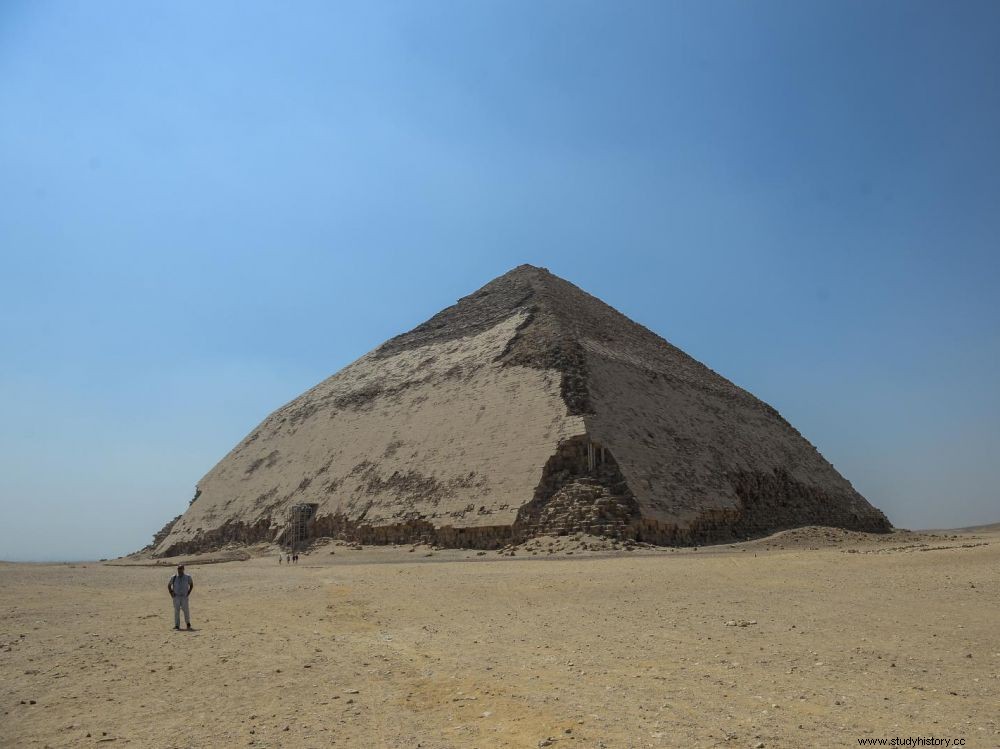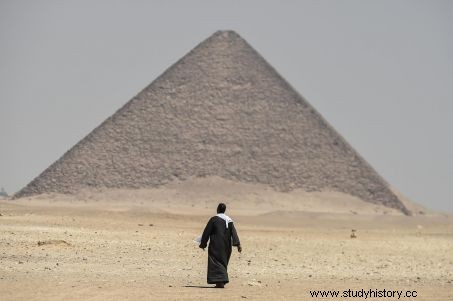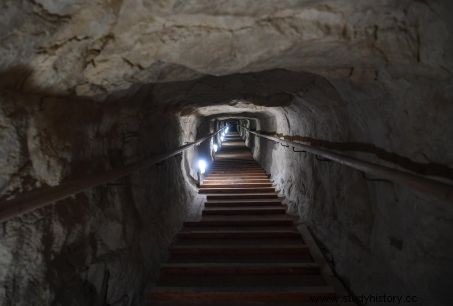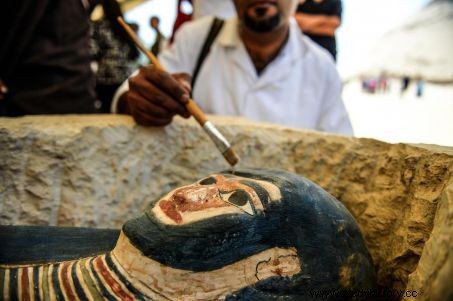Egypt reopens to the public two pyramids closed for more than 50 years at the site of Dahshur, south of Cairo.

The Bent Pyramid, on the site of Dahshur (Egypt).
And two! It is not so common, as the Egyptian authorities have just done on Saturday July 13, to allow the public access again to the pyramids, these monumental tombs reserved for deceased sovereigns. Indeed, since 1965, it is the first time that it is possible to explore the emblematic "Bent pyramid", also known as rhomboidal, and its immediate neighbour, "the red pyramid", both located in Dahchour, on the west bank of the Nile, within the royal necropolis of ancient Memphis, about forty kilometers south of Cairo, the current capital.

The "Red pyramid", satellite pyramid of the "rhomboidal". © Mohamed al-Shahed /AFP
Erected during the reign of Pharaoh Snefru (2561-2538 BC), the founder of the IV th dynasty, father of the famous Cheops (2538-2516 BC), the imposing rhomboidal pyramid is unique in its architectural appearance. Transition between the step pyramid of Djoser (2667-2648 BC), the first of all, on the Saqqara plateau, and that of Meidum, at the entrance to the Fayoum, the building of 105 meters high presents a characteristic appearance (read Science and Future n° 857 ). Its double inclination comes from a change of plan during its construction. While the planned gradient was 58 degrees, it had to be revised to 43 degrees halfway through the work, due to the instability of the base.
Amenities to facilitate visits
During the reopening, the Minister of Egyptian Antiquities, Dr. Khaled El-Anany, who came to the site, explained that in order to facilitate visits and ensure safety, restorations were carried out and internal and external lighting systems installed, as well as access ramps.

Access ramp inside the Bent Pyramid. © Li Yan/Xinhua/AFP
The Minister also took advantage of his press conference to reveal several discoveries recently made during archaeological excavations carried out in the Dahshur region. In particular, stone sarcophagi and others in polychrome woods exhumed near the ruins of a wall located about 300 meters from the “white pyramid” of Amenemhat II (1930-1895 BC), a work of which almost nothing remains. The last of the great pyramids to have been erected at Dahshur is that of Amenhemat III (1843-1796 BC), the “black pyramid”, which is very badly damaged today.

One of the polychrome sarcophagi recently unearthed at Dahshur. © Mohamed al-Shahed /AFP
For several years, by regularly announcing archaeological discoveries, the Egyptian authorities have been striving to bring back tourists, on whom the country's economy largely depends. Very affected by the political instability since the "revolution" of 2011, then the overthrow of President Mohamed Morsi in 2013, the tourism sector seems however to be regaining strength.
B. A. with AFP
